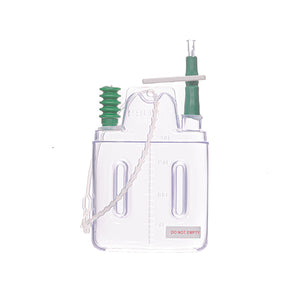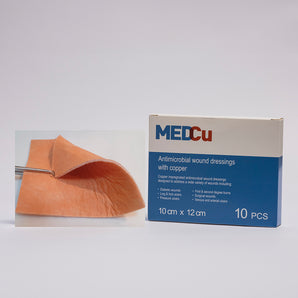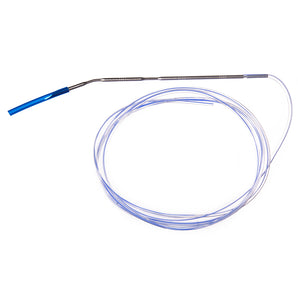Key Takeaways
- Silver dressings are highly effective in managing wound infections due to their antimicrobial properties, targeting bacteria, fungi, and other pathogens.
- They create a moist healing environment, reduce inflammation, and minimise infection risks, making them suitable for chronic and acute wounds like diabetic foot ulcers, burns, and post-surgical wounds.
- Different types of silver dressings, such as foam, alginate, hydrogel, and silver-impregnated bandages, are available, each designed for specific wound conditions and exudate levels.
- Silver dressings outperform traditional wound care methods in infection prevention and biofilm management, but may not be ideal for dry wounds or individuals with silver sensitivities.
- Although they can be more expensive than standard dressings, their efficacy in complex or high-risk wounds often justifies the cost for improved patient outcomes.
- Healthcare providers should assess wound type and patient needs to determine whether silver dressings are the most suitable solution for effective wound care.
When it comes to managing wound infections, silver dressings have gained significant attention for their antimicrobial properties. These dressings are designed to combat bacteria, fungi, and other pathogens, creating a cleaner environment that supports healing. But how effective are they in drawing out infections, and are they suitable for every type of wound?
Silver dressings not only help reduce bacterial load but also maintain a moist environment, which is crucial for recovery. They are particularly useful for wounds at high risk of infection, such as diabetic foot ulcers, burns, and post-surgical wounds. However, their application depends on factors like wound type and individual sensitivity to silver. Understanding how they work can help us determine their role in infection management and wound care.
What Are Silver Dressings?
Silver dressings, widely recognised for their antimicrobial properties, play a pivotal role in advanced wound care. They combine infection control with moisture management, accelerating healing in many wound types.
Composition And Types Of Silver Dressings
Silver dressings contain silver ions that provide broad-spectrum protection against bacteria, fungi, and pathogens. These dressings often comprise a foam or fibre base to absorb exudate while maintaining an optimal moisture balance. The main types include:
- Silver Foam Dressings: Ideal for wounds with moderate to high exudate, like pressure ulcers or burns.
- Silver Alginate Dressings: Suitable for wet wounds as they form a gel-like barrier upon contact with moisture.
- Silver Hydrogel Dressings: Recommended for sloughy or dry wounds due to their hydrating properties.
- Silver-Impregnated Bandages: Effective for superficial wounds or wounds with low exudate.
Their versatility makes them a valuable component in modern wound care practices.
Historical Use Of Silver In Medicine
The use of silver in medicine dates back to ancient times. Civilisations like the Greeks and Romans used silver containers to preserve liquids due to its antimicrobial properties. By the 19th century, silver nitrate was commonly applied to treat infections.
Throughout the 20th century, advancements led to the development of silver compounds in wound care. Today, silver dressings are a standard solution, particularly for wounds at high risk of infection, including diabetic foot ulcers and post-surgical wounds.
By combining tradition with innovation, products like silver wound dressings exemplify how medical solutions continually evolve to enhance patient outcomes.
How Do Silver Dressings Work?
Silver dressings play an essential role in advanced wound care by using their intrinsic antimicrobial properties to manage and prevent infections. These dressings are ideal for wounds prone to bacterial invasion and promote improved healing conditions.
Antibacterial Properties Of Silver
Silver ions in silver wound dressings exhibit broad-spectrum antimicrobial activity. They target a range of pathogens, including bacteria, fungi, and other microorganisms commonly found in wound sites. By disrupting bacterial cell walls, silver ions inhibit cell replication, decreasing the microbial load.
These dressings provide long-lasting protection as the silver ions are gradually released, ensuring continuous antimicrobial action. This feature makes them suitable for chronic wounds like venous ulcers or diabetic foot ulcers and acute wounds such as burns or traumatic injuries. Importantly, silver dressing for wound care effectively reduces the risk of wound infections without promoting bacterial resistance.
Mechanism Of Action In Wound Healing
Silver dressings contribute to wound healing by balancing moisture levels and creating an optimal healing environment. The foam or layered structure absorbs exudate while retaining moisture at the wound interface, preventing dehydration or maceration.
The antimicrobial activity reduces inflammation caused by bacteria, which accelerates tissue regeneration. Additionally, the presence of silver minimises risks of biofilm formation, a major barrier in chronic wound healing. These unique properties make silver dressings a preferred choice in managing complex or infected wounds. However, individuals with known sensitivities to silver or dry wounds may require alternative solutions for treatment.
For healthcare providers across Africa, silver dressings represent an innovative step in fulfilling the diverse needs of effective wound care.
Effectiveness Of Silver Dressings In Infection Management
Silver dressings play a vital role in managing wound infections due to their unique antimicrobial properties. These dressings reduce bacterial loads, help create an optimal healing environment, and are particularly effective for wounds with high infection risks.
Clinical Studies And Evidence
Research consistently highlights the efficacy of silver wound dressings in infection prevention and treatment. A study in the Journal of Wound Care found that silver dressings significantly reduced bacterial counts in chronic wounds such as diabetic foot ulcers and venous ulcers. Similarly, clinical trials have demonstrated a reduction in infection rates for post-surgical wounds and burns treated with these dressings.
Silver ions disrupt bacterial cell walls, limit microbial replication, and prevent biofilm formation. Evidence suggests they are effective against antibiotic-resistant strains, offering clinicians essential options in wound care management.
Benefits And Limitations
Benefits:
- Antimicrobial Activity: Broad-spectrum protection combats bacteria, fungi, and other pathogens.
- Moist Environment: Supports healing by maintaining hydration while absorbing excess exudate.
- Inflammation Reduction: Minimises swelling and discomfort, enabling healthier tissue growth.
Limitations:
- Sensitivity Risks: Individuals with silver allergies might experience adverse reactions.
- Inapplicability To Dry Wounds: These dressings aren't effective for wounds needing minimal moisture management.
- Expense: Silver-impregnated dressings may cost more than standard alternatives.
Incorporating silver dressing solutions into wound care strategies offers strong infection management benefits, aiding healthcare providers in delivering improved patient outcomes.
Comparing Silver Dressings To Alternative Treatments
Silver dressings remain a leading choice in managing infections during wound care, but comparing them to other options is vital to understanding their unique advantages and limitations.
Silver Dressings Vs Traditional Wound Care
Silver wound dressings outperform traditional gauze or non-impregnated alternatives in infection control. While gauze absorbs moisture, it lacks advanced antimicrobial properties, leaving wounds more susceptible to bacterial growth. In contrast, silver dressings for wound care release silver ions, reducing microbial load and preventing infection more efficiently. These dressings also maintain a balanced environment for tissue healing, unlike gauze, which often causes dryness and disrupts granulation when removed.
For chronic or at-risk wounds, such as venous ulcers or diabetic foot ulcers, silver dressings perform better than standard methods in reducing biofilm formation, a primary contributor to delayed healing. However, traditional dressings may still suit minor, low-risk wounds due to their affordability and availability. Cost-effectiveness often influences choices, but the long-term outcomes provided by silver wound dressings make them ideal for complex cases.
Risks And Side Effects
Although effective, silver dressings carry certain risks. Individuals with sensitivities to silver or metals should avoid these products, as allergic reactions can delay wound healing. Similarly, their antimicrobial properties can affect healthy cells when improperly used, highlighting the importance of professional guidance in wound care applications.
Dry or minimally exuding wounds may not benefit from silver dressing for wound care, as their hydrating properties could create an overly moist environment, leading to maceration. Alternatives, such as hydrocolloid dressings, may offer better outcomes for these cases. Moreover, the higher cost of silver wound dressings might deter usage in resource-limited settings, though their efficacy justifies their expense for critical or high-risk wounds.
By understanding both advantages and drawbacks, healthcare providers can make informed decisions on using silver dressings or alternatives in diverse treatment scenarios.
Applications In Different Types Of Wounds
Silver wound dressing is widely used in wound care due to its antimicrobial properties and ability to manage infection. Below, we discuss its applications in chronic wounds and acute or surgical wounds.
Chronic Wounds
Chronic wounds, such as venous ulcers, diabetic foot ulcers, and pressure ulcers, benefit significantly from silver wound dressing. These wounds often face delayed healing due to bacterial infection or biofilm formation. Silver dressings reduce bacterial load by disrupting cell walls, promoting a cleaner wound environment.
For diabetic foot ulcers, ensuring infection prevention is critical, as infections can lead to complications or prolonged recovery. Venous ulcers, prone to constant exudate, require dressings that absorb excess fluid while maintaining optimal moisture; silver-infused foam dressings perform this dual role effectively. By minimising infection and inflammation, these dressings support tissue regeneration in chronic wound management.
Acute And Surgical Wounds
Silver dressing for wound care is also applicable for acute injuries and post-surgical wounds. These wounds, including burns and traumatic injuries, often have a high risk of infection during the initial healing phase. The controlled release of silver ions creates a protective antimicrobial layer over such wounds.
Post-surgical wounds, for instance, need effective infection management to prevent complications or hospital readmissions. Silver-impregnated dressings offer broad-spectrum antimicrobial protection, reducing the likelihood of bacterial colonisation. Burns, which are particularly susceptible to infection, benefit from silver dressings by lowering biofilm risks and encouraging faster healing. Their absorption capabilities also manage wound exudate while protecting surrounding tissue.
Silver-infused wound care offers tailored solutions for both chronic and acute wounds, helping healthcare providers improve outcomes for various medical cases.
Conclusion
Silver dressings have proven to be a valuable tool in modern wound care, offering effective infection control and promoting optimal healing conditions. Their broad-spectrum antimicrobial properties and ability to maintain a moist environment make them particularly useful for high-risk and chronic wounds.
While they bring significant benefits, it's essential to consider individual needs, wound type, and potential sensitivities when selecting treatments. By understanding the strengths and limitations of silver dressings, we can make informed choices that prioritise patient health and healing outcomes.
Visit Dynamed Pharmaceuticals
Phone: 0861 00 00 43
Website: dynamed.co.za
Email (Sales): sales@dynamed.co.za
Email (Info): info@dynamed.co.za
Google Maps: Find us here
Frequently Asked Questions
What are silver dressings?
Silver dressings are specialised wound dressings infused with silver, known for their antimicrobial properties. They help reduce bacterial load, manage infections, and maintain a moist environment that promotes wound healing. These dressings come in various forms such as foam, alginate, hydrogel, and silver-impregnated bandages.
How do silver dressings work?
Silver dressings release silver ions that disrupt bacterial cell walls and inhibit their replication. This reduces microbial load in the wound, prevents infection, and supports tissue regeneration. They also balance moisture levels by absorbing excess exudate while preventing dehydration.
What types of wounds are silver dressings used for?
Silver dressings are ideal for high-risk or infected wounds, including diabetic foot ulcers, venous ulcers, pressure ulcers, burns, and surgical wounds. They are especially useful for chronic wounds prone to biofilm formation and delayed healing due to infection.
Are silver dressings more effective than traditional dressings?
Yes, silver dressings are more effective for high-risk and infected wounds compared to traditional dressings. They offer superior infection control, moisture management, and reduce inflammation, whereas traditional gauze may suffice for minor, low-risk wounds.
Can anyone use silver dressings?
Silver dressings are not suitable for everyone. Individuals with known silver allergies or wounds that are too dry may require alternative treatments. It's also important to consult a healthcare professional to determine their suitability for particular wound types.
What are the benefits of silver dressings?
Silver dressings provide broad-spectrum antimicrobial activity, reduce infections, balance wound moisture, minimise inflammation, and accelerate healing. They are particularly effective in reducing biofilm formation in chronic wounds.
Are there any side effects of using silver dressings?
Side effects of silver dressings may include allergic reactions in individuals sensitive to silver. Overuse on dry wounds may also create an overly moist environment, leading to maceration. These dressings can be more expensive than traditional methods.
Are silver dressings reusable?
No, silver dressings are typically single-use products. They must be replaced according to the healthcare provider's recommendations to maintain their antimicrobial effectiveness and prevent contamination.
How long can silver dressings be used?
The duration depends on the wound's condition and healing progress. Silver dressings are usually used for acute infections and replaced every few days, but prolonged use should be monitored by a healthcare professional.
Are silver dressings expensive?
Yes, they are generally more expensive than traditional dressings. However, their effectiveness in reducing infections and promoting healing in high-risk wounds often justifies the higher cost.






